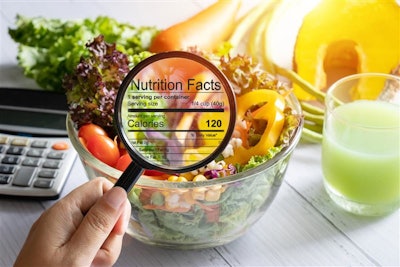
The world of food labels and food certifications is a minefield for consumers. For every label that ensures a product is backed by rigorous standards that genuinely mean something, there are many more out there that don't guarantee a thing. This leaves customers confused at best, and at worst, utterly unaware of what labeling they can trust and why.
For example, labels like USDA Organic and Non-GMO Verified are two of the most recognizable food labels, with strict standards that guard their usage. However, precisely what differentiates products using these labels from products using less rigorous descriptors, like "local" and "natural," is not widely known by the average consumer. Industry reports, for example, indicate that more than half of shoppers thought labeling something as organic was "an excuse to charge more." More than one-third said they thought organic was marketing jargon with "no real value or definition."
The problem is a big part of the narrative is missing. For consumers to truly make informed purchasing decisions, we need to explain what the labels mean, the process of certification and which labels they can trust. However, this can be complex for the general consumer and doesn't boil down quickly to easily digestible soundbites.
For example, there's a common misconception that USDA Organic and Non-GMO Verified foods are one and the same, while they are in fact very different. Food labeled USDA Organic must be produced to a set of government-regulated standards, which (among other things) prohibit the use of GMOs entirely, as well as synthetic herbicides and pesticides – all of which are inspected by an independent certifying agency. It's an involved process that's highly traceable and closely monitored.
However, that's not the case with Non-GMO verification. While these products cannot contain any GMO products, the ingredients do not need to be grown or produced under the same strict conditions as organic food. So, while organic food is non-GMO, non-GMO is not always organic.
Both labels have their place and tell us about how and where our food is produced, more so than food labeled "local" or "natural." However, there is still a lack of understanding of what they mean. Consumers are unclear what separates them from one another, and what sets them apart from marketing spin.
Consumer interest in food labels is high and shows a genuine desire to shop smarter. The will is there, but the food sector is missing a critical education opportunity.
For example, research published in 2020 showed that an overwhelming 90% of consumers read the labels on products, paying particular attention to the nutritional information and they're looking for more than just information about calories and saturated fats. Sales of products explicitly labeled "Non-GMO Verified" or "Organic" have soared during the past decade. One study showed the number of consumers actively avoiding genetically modified foods jumped from 15% in 2007 to 47% in 2019. Meanwhile, the U.S. organic sector posted a banner year in 2019, sales in the food and non-food markets totaled a record $55.1 billion, an increase of 5% from the previous year.
This shows these established (and rigorously defined) labels are aligned with the U.S. consumer's values and habits, even if their value isn't truly understood by many. There is an opportunity to continue to meet U.S. consumers’ desires through rigorous certifications and consumer education around the value of these certifications.
Labeling to educate about rising trend of controlled environment agriculture
In recent years, and particularly during the pandemic, indoor farming has been gaining ground and expanding, in part due to its sustainability and shorter, more reliable supply chains.
This quickly growing category of controlled environment agriculture (CEA) is not well understood by the general public. That's a real shame, as the innovation here deserves highlighting. Consumers would benefit from an increased understanding of what CEA offers, and how it can meet their needs for local, safe and sustainable food. Though CEA farms may adhere to organic standards or use non-genetically modified seeds, the fundamental agricultural approaches and technologies are different and carry their own unique benefits. CEA producers abide by existing food safety standards and some adhere to an enhanced food safety certification, focusing on their different risk profile related to water use, herbicide/pesticide use and impact from animals and animal byproducts.
A new approach to certification would help distinguish CEA farmers from traditional growers in the public's eyes, which would be particularly helpful during times of crisis. Although foodborne illnesses from leafy greens are historically rare, instances are accelerating. Last year, an E.coli outbreak was linked to leafy greens in the California Central Coast growing region, following exposure to animal byproducts. This was also found to be related to the strain that caused three separate outbreaks in 2019. In fact, FDA investigations into outbreaks since 2013 have found the proximity of cattle – a "persistent source of E.coli" – to the fields of leafy greens as a "likely contributing factor" to these outbreaks.
CEA food safety labeling would improve consumer confidence in the face of these outbreaks, thanks to the commitment to no contact with animal byproducts, as well as other enhanced safety standards with which CEA farms comply. Certification for CEA growers would help raise awareness of how the sector operates and its unique advantages compared to traditional agriculture.
Food certification is nothing new, and in practice, any labeling regime for CEA should be as rigorous as USDA Organic or Non-GMO Verified. These are successful models to follow in terms of helping consumers to quickly identify products grown in indoor or vertical facilities on the shelves of their local supermarket and understand what makes them different.
This is an opportunity to further develop our food system’s narrative, and to not only identify products, but also educate consumers on what makes them different. By continuing the conversation, certification agencies and food producers can help consumers understand the innovation and enhanced processes behind the food they consume and their benefits, be they environmental or health related.

















